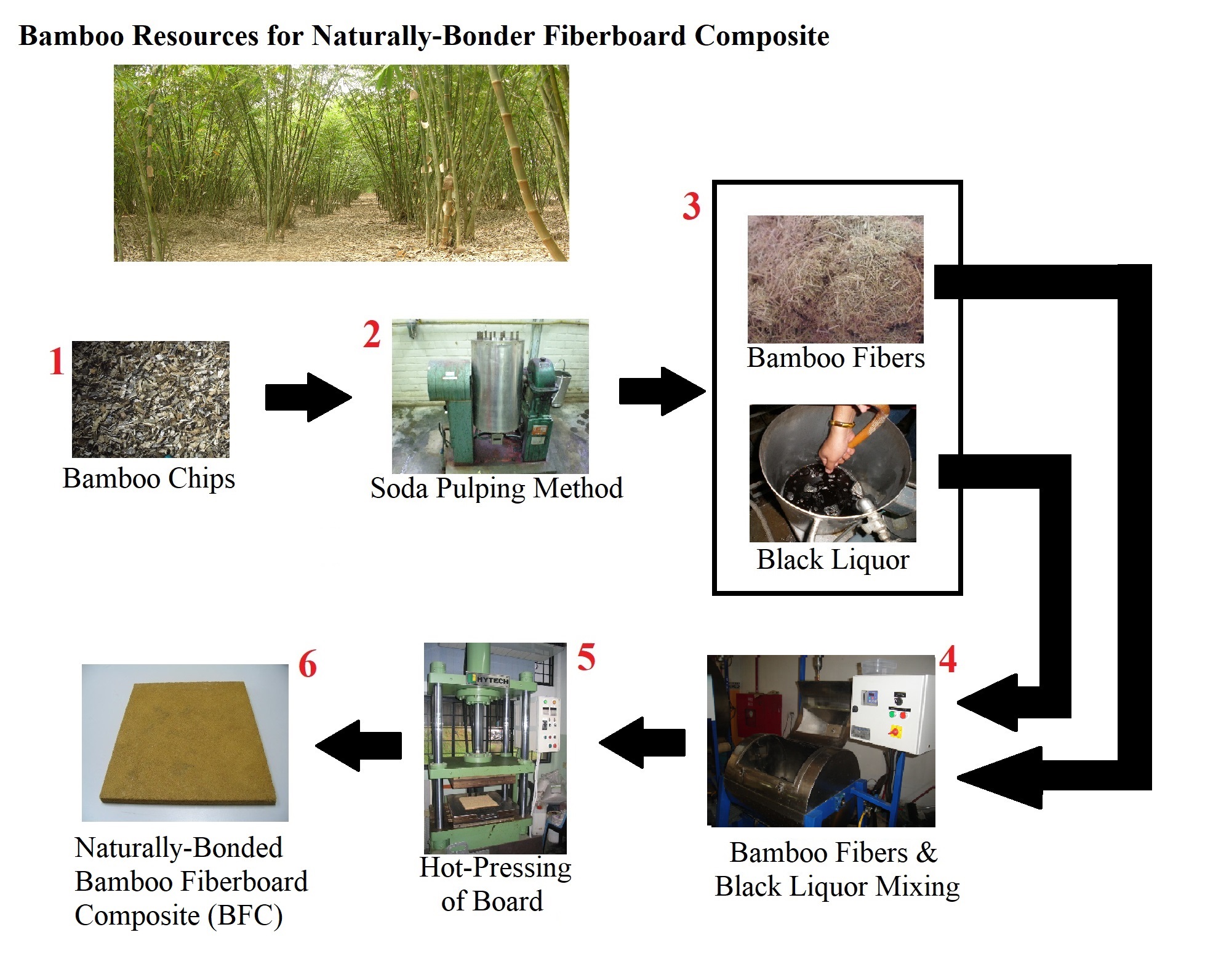 Open Access
Open Access
ARTICLE
Strength Performance and Microstructure Characteristic of Naturally-Bonded Fiberboard Composite from Malaysian Bamboo (Bambusa vulgaris)
1 Eco-Technology Program, Faculty of Applied Sciences, Universiti Teknologi MARA (UiTM), Shah Alam, 40450, Malaysia
2 Engineering Research Centre, Malaysian Agricultural Research and Development Institute (MARDI), Serdang, 43400, Malaysia
3 Department of Forestry and Wood Technology, Linnaeus University, Växjö, 35195, Sweden
* Corresponding Author: Reza Hosseinpourpia. Email:
(This article belongs to the Special Issue: Functionalization of Wood and Bamboo-Based Materials)
Journal of Renewable Materials 2022, 10(10), 2581-2591. https://doi.org/10.32604/jrm.2022.021313
Received 07 January 2022; Accepted 15 March 2022; Issue published 08 June 2022
Abstract
This study investigated the mechanical properties and microstructural characteristics of fiberboard composite produced by naturally-bonded Malaysian bamboo fiber (Bambusa vulgaris). The components that obtained through soda pulping of bamboo culms such as fiber and black liquor, were used for the preparation of high-density fibreboard composite at two target densities of 850 and 950 kg/m3. The bamboo fiberboard composite (BFC) were then produced at 200°C and two pressing parameters of 125 and 175 s/mm. The mechanical properties, e.g., flexural strength and internal bonding (IB) of BFC samples were evaluated according to BS EN 310: 1993 and BS EN 319: 1993, respectively. It was found that the mechanical performance of the composite with 850 kg/m3 density was significantly higher than 950 kg/m3 ones, especially for the samples with 125 s/mm pressing parameter. Microstructure characteristic of the BFC samples illustrated that the fiber linkages were cracked in the composites with higher density, e.g., the composite with the density of 950 kg/m3 and also black liquor were slightly degraded at longer pressing time, which led to the reduction in mechanical properties, especially in IB strength.Graphic Abstract

Keywords
Cite This Article
 Copyright © 2022 The Author(s). Published by Tech Science Press.
Copyright © 2022 The Author(s). Published by Tech Science Press.This work is licensed under a Creative Commons Attribution 4.0 International License , which permits unrestricted use, distribution, and reproduction in any medium, provided the original work is properly cited.


 Submit a Paper
Submit a Paper Propose a Special lssue
Propose a Special lssue View Full Text
View Full Text Download PDF
Download PDF Downloads
Downloads
 Citation Tools
Citation Tools